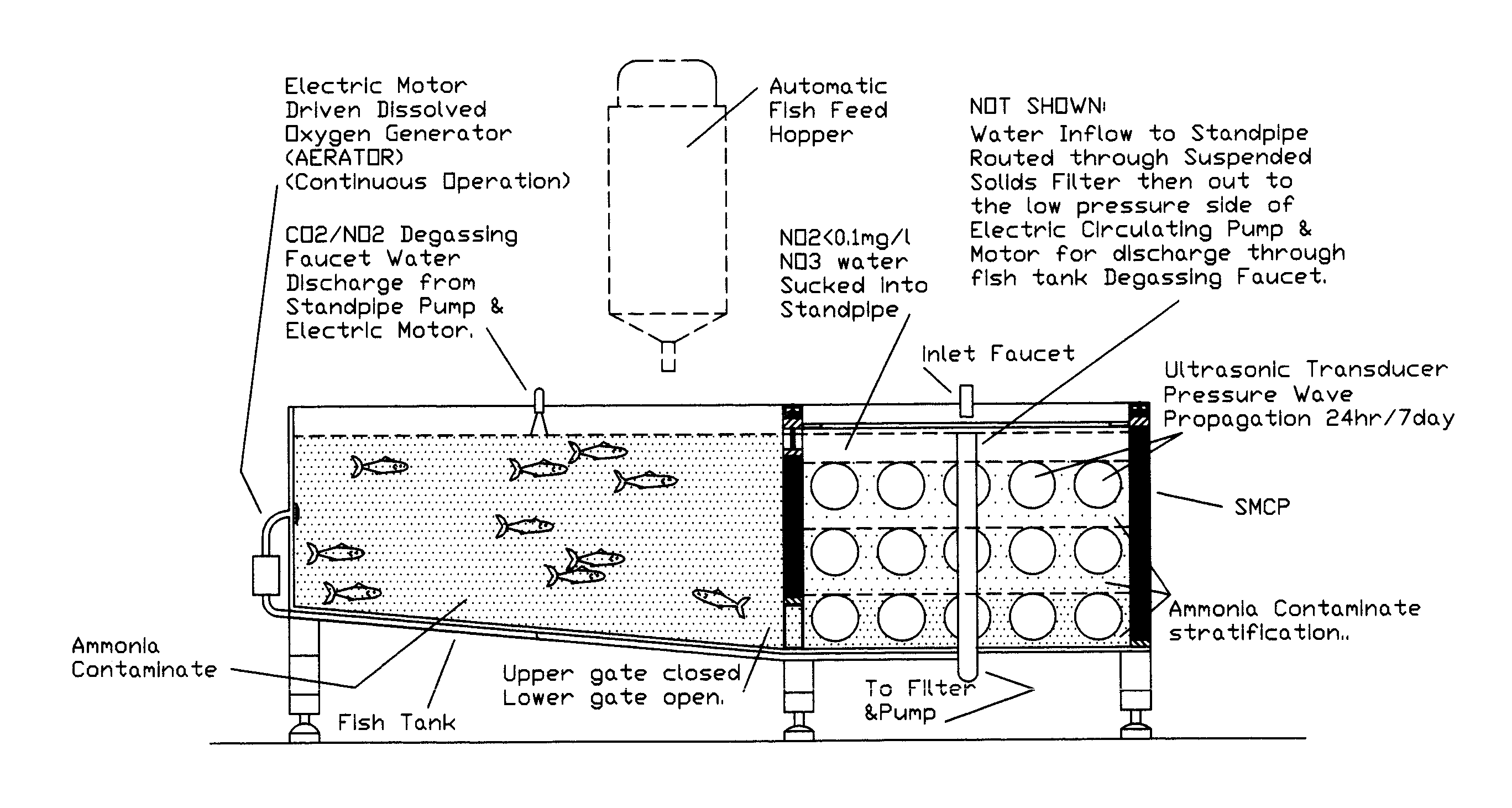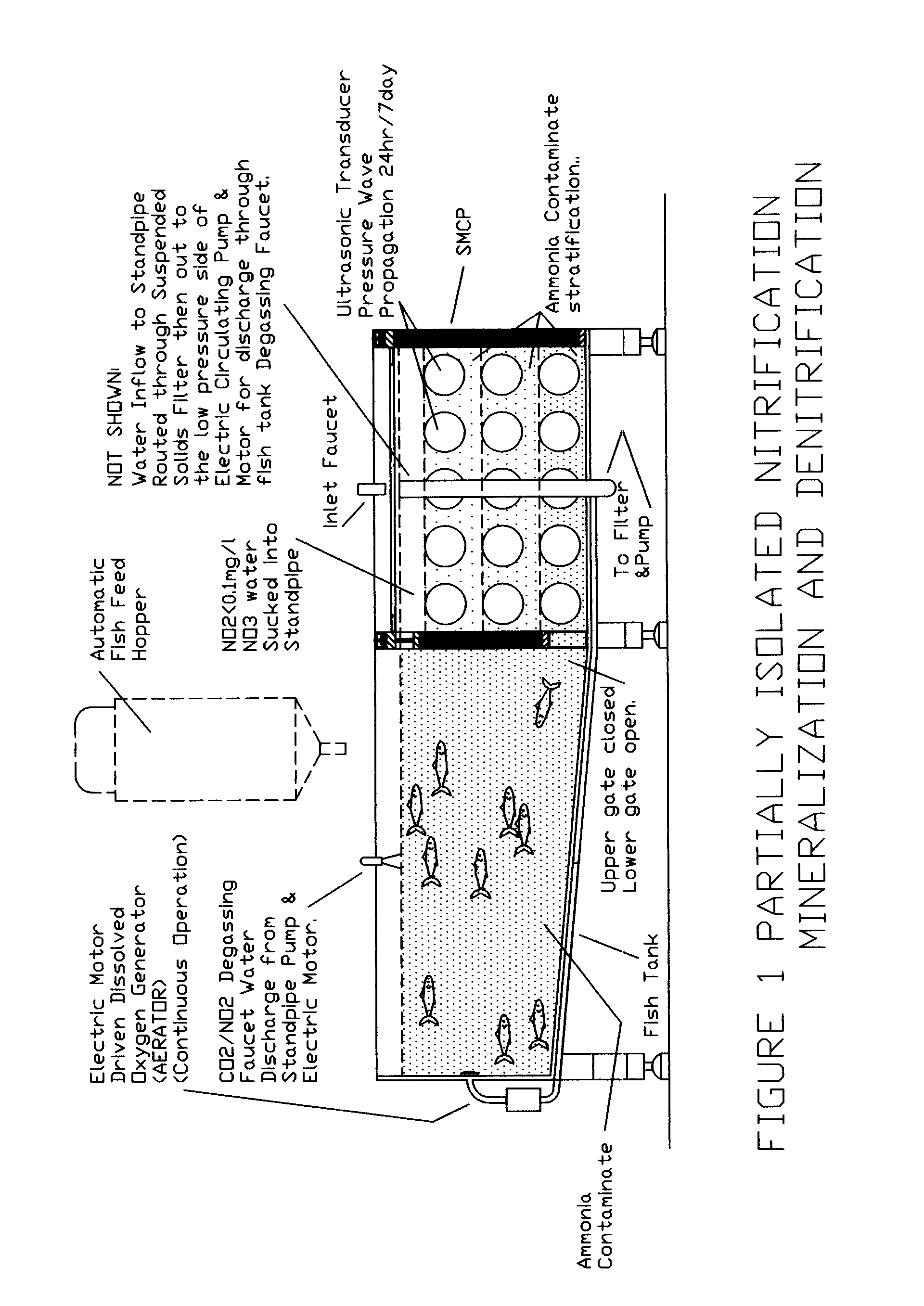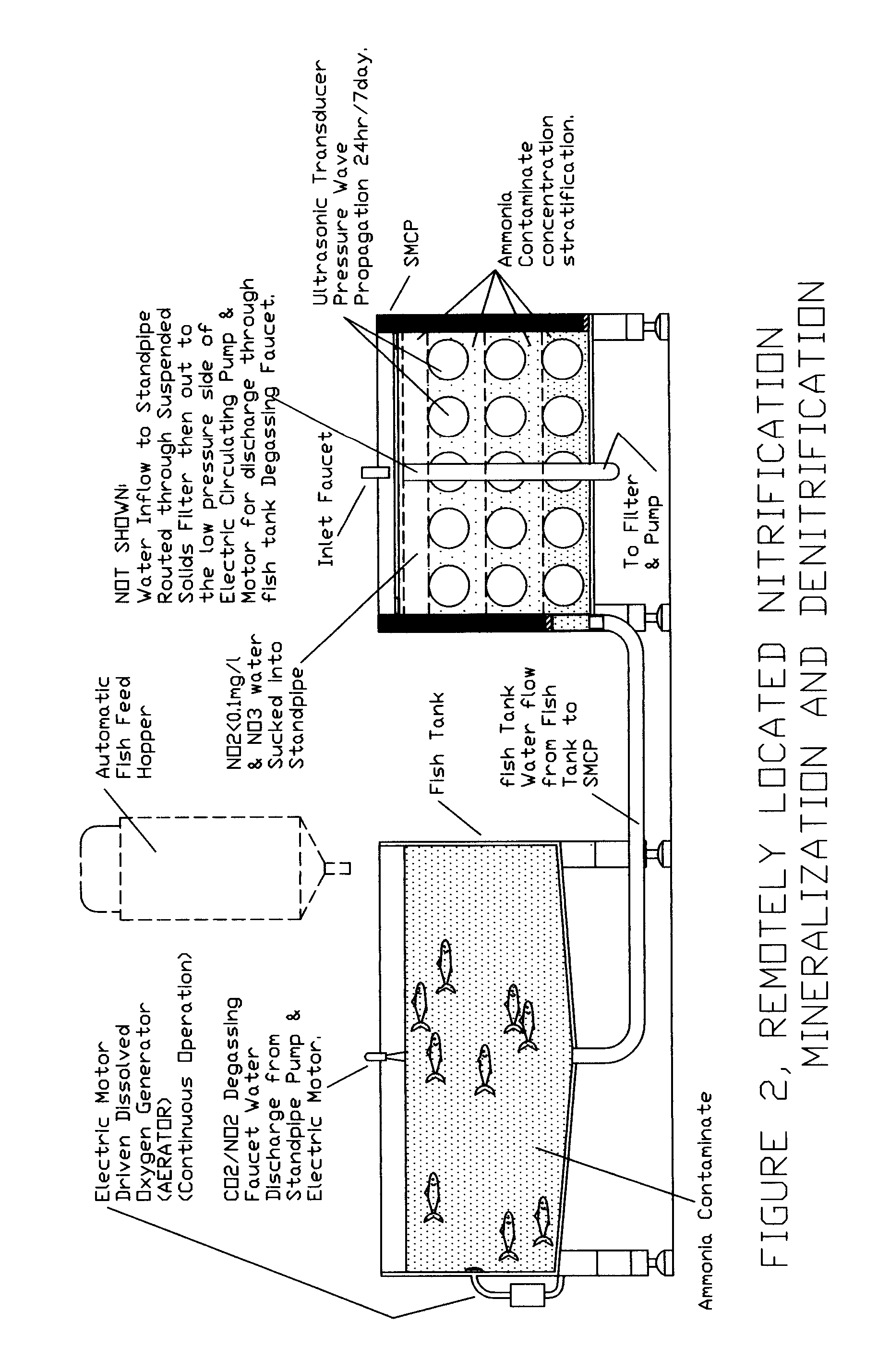Method And Device For Removal Of Ammonia And Other Contaminants From Recirculating Aquaculture Tanks
- Summary
- Abstract
- Description
- Claims
- Application Information
AI Technical Summary
Benefits of technology
Problems solved by technology
Method used
Image
Examples
Embodiment Construction
[0026] Based on the experimentation data set forth below, an embodiment of the present invention includes a sono-molecular-conversion apparatus that has a stand-alone console housing, an ultrasound powered tank, input / output water ports, an outlet delivery pump and a particulate filtration system illustrated in FIGS. 1 and 2. Water contaminated with ammonia and uneaten food particulate is extracted from the recirculating aquaculture system (RAS) and subjected to sono-molecular-conversion to reduce ammonia concentration to the region of 0.1 mg / L or less before being fed back through a particulate matter filtration system to the RAS. This is a continuous 24 / 7 ammonia conversion process. The RAS water tanks are equipped with ammonia sensors at their water input and outlet ports.
[0027] In the automatic ammonia sensing version, signal outputs from both ammonia sensors are fed to a microprocessor which adjusts the sono-molecular-conversion intensity amplitude to keep the required rate of...
PUM
 Login to View More
Login to View More Abstract
Description
Claims
Application Information
 Login to View More
Login to View More - R&D
- Intellectual Property
- Life Sciences
- Materials
- Tech Scout
- Unparalleled Data Quality
- Higher Quality Content
- 60% Fewer Hallucinations
Browse by: Latest US Patents, China's latest patents, Technical Efficacy Thesaurus, Application Domain, Technology Topic, Popular Technical Reports.
© 2025 PatSnap. All rights reserved.Legal|Privacy policy|Modern Slavery Act Transparency Statement|Sitemap|About US| Contact US: help@patsnap.com



